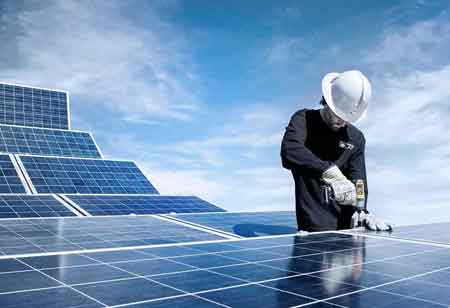Thank you for Subscribing to Energy Business Review Weekly Brief
The Ingenious World of Solar PV Technology
Humanity's quest for sustainable energy has led to harnessing the sun's boundless energy.

By
Energy Business Review | Tuesday, June 25, 2024
Stay ahead of the industry with exclusive feature stories on the top companies, expert insights and the latest news delivered straight to your inbox. Subscribe today.
As we continue to innovate and refine this technology, we move closer to a world where clean energy is not just a choice but a way of life.
Fremont, CA: Humanity's quest for sustainable energy has led to harnessing the sun's boundless energy. Solar Photovoltaic (PV) technology stands at the forefront of this green revolution, transforming sunlight into electricity and powering our lives with a clean, renewable resource.
The Science behind Solar PV
Solar PV systems operate on a simple yet profound principle: converting light into electricity. At the heart of these systems are PV cells, typically made of silicon, which create an electric field when illuminated. Light intensity directly influences the electricity generated, with brighter light yielding a greater flow.
Components of a Solar PV System
A typical solar PV system comprises several key components:
• PV Panels: These are the visible face of the system, capturing sunlight and generating direct current (DC) electricity.
• Inverter: This device is the system's brain, converting DC into alternating current (AC) and making the energy usable in homes.
• Generation Meter: This allows homeowners to monitor their system's output, with a flashing light indicating electricity generation.
• Export Limiters: In cases where the generated electricity exceeds home usage, these limiters manage the excess, ensuring it's either used efficiently or exported to the grid.
The Array: A Symphony of Cells
An array culminates individual cells, modules, and strings working in unison. It results from meticulously wired modules determining the system's operating voltage, which is crucial for minimizing voltage drop and selecting the appropriate inverter type.
The Role of Generation Meters and Export Limiters
Generation meters provide a tangible connection to the system's productivity, while export limiters play a critical role during non-consumption periods. They ensure that any surplus electricity is either capped or redirected, maintaining balance and efficiency in the system.
Solar PV technology is more than just an alternative energy source; it's a testament to human ingenuity and our commitment to a sustainable future. As we continue to innovate and refine this technology, we move closer to a world where clean energy is not just a choice but a way of life. Once thought too vast to capture, the sun's energy now powers our homes, cities, and industries, shining a light on the path to a greener tomorrow.






